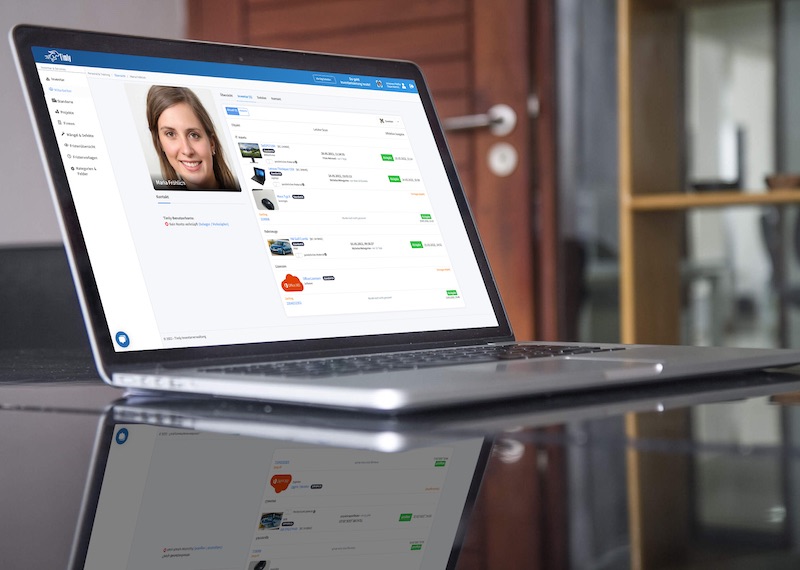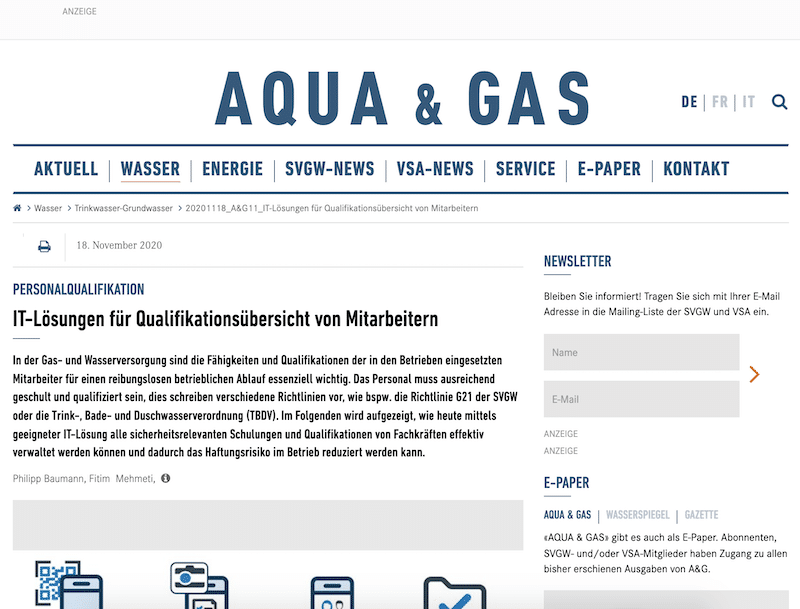
Key Takeaways:
- Asset management strategy incorporates planning, acquisition, utilization, and disposal phases for effective management.
- Techniques like identification, classification, auditing, tracking, and optimization are crucial for asset management throughout its lifecycle.
- Utilizing advanced software tools and expert consulting services enhances asset optimization, performance monitoring, and decision-making processes.
In This Article:
- Asset Management Strategy
- What Are the Four General Phases of Asset Management Strategies?
- What Is a Strategic Asset Management Plan?
- Asset Management Strategy Techniques
- Asset Management Strategy Tools
- Asset Management Software in Use by Our Customers
- Balancing Strategic and Operational Asset Management
- Asset Management Strategies Goals and Objectives
- How to Increase Financial Returns With Asset Management Strategies?
- Measuring Success in Asset Management Strategies
- Frequently Asked Questions About Asset Management Strategy
Asset Management Strategy
Asset management strategy is about planning and managing the organization’s assets from the time they are purchased until their end of life. It requires the identification of assets, purchasing them, tracking their usage, maintenance, and eventual disposal. Organizations need to ensure that there is a thorough asset management strategy to ensure that resources are used optimally, thus enhancing efficiency, minimizing costs, and reducing risks.
A clear asset management strategy will enable organizations to make informed decisions about their current assets, focus on crucial investments, and ensure that asset management aligns with their business objectives. Having an effective asset management plan will empower organizations to maximize their assets, gain a competitive edge in the marketplace, and achieve sustainability in the long run.
What Are the First Steps to Create an Asset Management Strategy?
- Identify Current Assets: Organizations need to conduct a comprehensive inventory check and document all assets in stock, including hardware, software, licenses, and other assets.
- Establish Goals and Objectives: Determine the goals and objectives of the asset management strategy, ensuring alignment with the organization’s overall objectives.
- Analyze Requirements: Identify the organization’s needs and requirements for asset management, ensuring scalability, compliance, and adherence to risk management.
- Develop Processes: Define processes and procedures for the purchase, deployment, usage, maintenance, and disposal of assets. Establishing clear processes ensures consistency and efficiency in asset management.
- Allocate Resources: Allocate budget, personnel, and technology necessary for implementing and executing the developed asset management strategy.
- Set Metrics: Define key performance indicators (KPIs) and metrics to measure the success of the strategy. Continuous monitoring and optimization of asset management practices are essential for improvement.
How to Improve an Asset Management Strategy?
In order to improve an asset management strategy, organizations need to ensure that the following procedures are in place:
1. Conduct regular or periodic reviews of the asset management strategy to identify areas for improvement and ensure ongoing alignment with business needs.
2. Maintain accurate, up-to-date, and well-documented asset data to facilitate informed decision-making and ensure compliance with regulations.
3. Implement automation tools and software solutions to streamline asset tracking and reporting processes, thereby enhancing the effectiveness of the asset management strategy and reducing the risk of manual errors.
4. Align and optimize asset utilization by integrating current asset management processes with systems such as IT service management (ITSM) and procurement systems.
5. Provide training to employees responsible for asset management to ensure they understand the relevant processes and policies, ultimately optimizing asset utilization and adherence to established procedures.
What Are the Four General Phases of Asset Management Strategies?
The four general phases of asset management strategies are planning, acquisition, utilization, and disposal.
The planning phase requires organizations to set targets, come up with policies, and design strategies so that assets are managed well. This requires documenting assets that are in place and defining the goals of each resource. Once that is done, it is time to purchase the asset that suits the organization’s objectives. This would entail procuring and negotiating with the vendor that has been selected. This is to ensure that you are getting value for money for your asset purchase.
Once the asset is in stock, it is time to focus on its lifecycle utilization, that is, from the time it is purchased right up until the end-of-life. Proactive maintenance and monitoring on a regular basis will ensure that the asset is utilized to its full potential, reducing its downtime while increasing its lifespan. It helps with understanding more about the equipment’s depreciation life. The final stage is when the asset is finally disposed of or retired in a cost-effective and sustainable manner. This would either require the asset to be decommissioned, resold, recycled, or disposed in a proper manner to ensure that regulatory requirements are met.
All these phases are linked to provide a continuous cycle of asset management. Hence, it ensures that the assets are able to contribute and deliver value time.
Examples of Successful Asset Management Strategies per Industry
Healthcare Sector:
The healthcare sector thrives on asset management strategy so that the assets are used efficiently in patient care while ensuring cost effectiveness. For example, a robust tracking system is used to monitor and maintain the efficiency and utilization of the medical devices that are in place. This is important to reduce the risk of downtime and to ensure that devices are replaced properly.
Manufacturing Sector:
Employing asset management strategy is crucial in the manufacturing sector because it is important that the machineries are maximized so that production levels are maintained. Hence, predictive maintenance is conducted to ensure that there are no unwanted malfunctions. To add on, inventory management systems are used to ensure that parts are always available.
Transportation Sector:
Asset management strategy is vital in the transportation section to ensure safety, reliability, and compliance on the vehicles. This is used to track and monitor the usage of vehicles, making sure it is maintained on time, and designing efficient route tracking.
These studies in various sectors showcase that asset management use cases strategies are vital in order to align the needs of the industry as well as mitigate challenges. By having proactive maintenance, proper allocation of resources, and using the right technology, organizations will be able to have efficient and robust operations.
Over 600 Companies, Schools and Cities Rely on Timly
(No credit card required)
What Is a Strategic Asset Management Plan?
A strategic asset management plan (SAMP) is in-depth documentation that provides organizations with the means to manage assets efficiently and in the long run. It factors in the management of asset inventory, the asset lifecycle, risk assessment, asset performance metrics, and financial planning from purchasing right up until end-of-life.
Before SAMP is introduced, the organization needs to ensure that a thorough assessment has been conducted on the current assets. Once that is done, objectives are outlined, strategies are put in place, and assets are then purchased. From there, the maintenance and disposal schedule is outlined to ensure that resources are properly allocated throughout the organization. This helps to streamline operations, mitigate any unwanted costs, increase the lifespan of the asset, and ensure compliance is followed.
By using SAMP, the organization will benefit from making better decisions, being more aware of asset utilization, reducing the risk of downtime, and increasing the duration of the asset’s usage and return of investment (ROI).

Asset Management Strategy Techniques
Asset management strategy techniques incorporate a few methods to ensure that assets are utilized and managed effectively throughout their lifecycle. It is structured around the four general phases of planning, acquisition, utilization, and disposal.
Each of these phases has five stages which are identification, classification, auditing, tracking, and optimization. This helps with managing assets systematically, and, thus, ensuring that they are effectively monitored, maintained, and utilized to reap maximum benefits throughout the organization.
Asset Management Strategy Tools
Asset management strategy tools utilize a range of robust software solutions along with expert consulting services. This is done to provide asset optimization and management, hence employing state-of-the-art software and specialists to provide guidance.
By using advanced management software and incorporating features such as real-time tracking, predictive maintenance, and in-depth analytics, organizations can then collect data and analyze it to make better decisions. This allows them to track asset performance, identify risks, and maximize the usage of assets and ROI.
Additionally, expert consulting services are crucial to develop and implement current asset management strategies that align with the organization’s goals and objectives. They bring insights into best practices, compliance issues, and new enhancements so that assets are fully optimized.
By using Timly, you can rest assured that your organization will have a strong impact on assets. By using our robust and intuitive software, you can reduce downtime and costs while ensuring efficient operations throughout the organization.
Asset Management Software in Use by Our Customers
The Timly software is continuously evolving to meet the needs of our customers. In various success stories, we show you how Timly optimizes processes in companies, thereby saving significant effort. With Timly, inventory management becomes child’s play.

Optimized Device Management With Innovative Self-Inventory
SodaStream is the world market leader for water sparkling systems for domestic use and has a lot of IT equipment at its various locations. Many colleagues now work from their home offices. A digital solution for the efficient management of IT end devices became necessary...

Panasonic x Timly: Driving Technological Innovation
One of the most remarkable aspects of human ingenuity is our ability to innovate. Innovation is embedded in the DNA of consumer electronics giant Panasonic, which has diversified into a number of sectors, from heavy industry to construction...

Manage Video Equipment Efficiently Without Much Effort
The Hamburg media company always does outstanding journalistic work and is characterized by independent reporting. In order to maintain journalistic quality, the teams work with highly specialized devices – these need to be managed efficiently...

Smart City Asset Management – Timly in Use at DIGOOH
The core business of DIGOOH Media GmbH in Cologne is to manage digital city light posters (DCLP) for outdoor use in various cities in Germany. The challenge here lies in making the client’s communication message always available at the right time, in the right place...
(No credit card required)
Balancing Strategic and Operational Asset Management
It is important to have a balanced strategic and operational asset management in order to increase performance and achieve sustainable growth. Strategic asset management focuses on increasing the value of assets, reducing risks, and ensuring long-term sustainability. Operational asset management, on the other hand, is geared towards effectively maintaining and utilizing assets.
To ensure that this balance works hand-in-hand, organizations can use the following methods:
- Ensure that daily goals are aligned with the organization’s long-term objectives. Hence, there should be communication and collaboration between departments to ensure that asset management strategy is practiced.
- Employ robust data analytics and performance metrics to develop clear and structured operational asset strategies. This can be done by gathering real-time information, forecasting trends, and ensuring asset optimization.
- Be open and flexible to adapt new ideas as the market is always changing with new technology and regulations. Hence, organizations need to always be agile and adaptive in order to refine their asset management strategies.
- Feedback is always important in an organization, and this is needed to determine if the asset management strategies that are put in place are effective. This ensures that short-term operational goals meet the organization’s long-term strategy.
Asset Management Strategies Goals and Objectives
The goal and objective of implementing asset management strategies is to prolong the lifespan of assets, reduce risks, and enhance the overall efficiency of the assets. Thus, the organization needs to ensure that the whole lifecycle of the asset is in line with the organization’s objectives.
To add on, asset management requires the balance of short-term objectives, which can be the day-to-day operations, with long-term goals such as sustainability and compliance over time. It is important to stay flexible in asset management strategy because of the ever-changing market trends. Thus, it is important to always remain agile, adopt new technological advancements together with new regulations in order to create value or prevent value destruction.
How to Increase Financial Returns With Asset Management Strategies?
In order to increase financial returns with asset management strategies, organizations will need to consider a few approaches that are key to the performance optimization of assets. This is important to generate ROI and increase profit margins.
A method that can be used to increase profit margins is to ensure that the asset portfolio is well managed so that it can capitalize on market opportunities and reduce risks. Asset managers look into allocating assets to ensure that there is a good mix of assets. This is based on risk tolerance, investment objectives, and alignment with market conditions. By strategically allocating assets across different asset classes and sectors, organizations can achieve a diverse portfolio and increase ROI.
Additionally, asset managers use key financial ratios such as return on investment (ROI), return on assets (ROA), and profitability ratios to understand the performance and efficiency of assets. This provides insight into the organization’s financial asset health, allowing for informed decisions on investment strategies and asset allocation.
Measuring Success in Asset Management Strategies
Measuring success in asset management strategies requires considering several important factors that contribute to effectively managing and optimizing assets throughout their lifecycle.
Firstly, it’s crucial to identify the key strategic assets that align with the organization’s objectives and provide a competitive edge. This enables asset managers to focus resources and efforts on increasing the value and performance of these assets.
Another essential aspect is evaluating the whole life cost, encompassing expenses incurred throughout the asset’s lifecycle, from purchase to disposal. Understanding these costs enables asset managers to strategically allocate resources and make informed investment decisions to optimize assets.
Additionally, ensuring asset integrity throughout the lifecycle is vital to managing assets to be reliable, compliant, and safe for use. Practices such as preventive maintenance, regular checks, and risk assessments help mitigate risks and threats that could impact asset performance.
Frequently Asked Questions About Asset Management Strategy
What Is an Asset Management Strategy?
How to Improve an Asset Management Strategy?
Recommended for You:
Book an online demo - free and without obligation - or create your free trial account directly.








































































































































































































































































